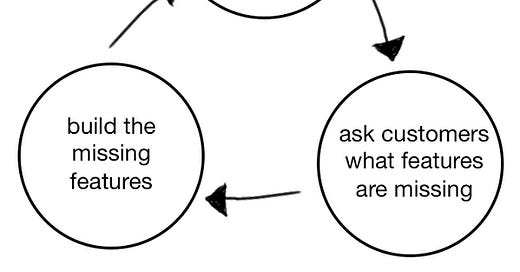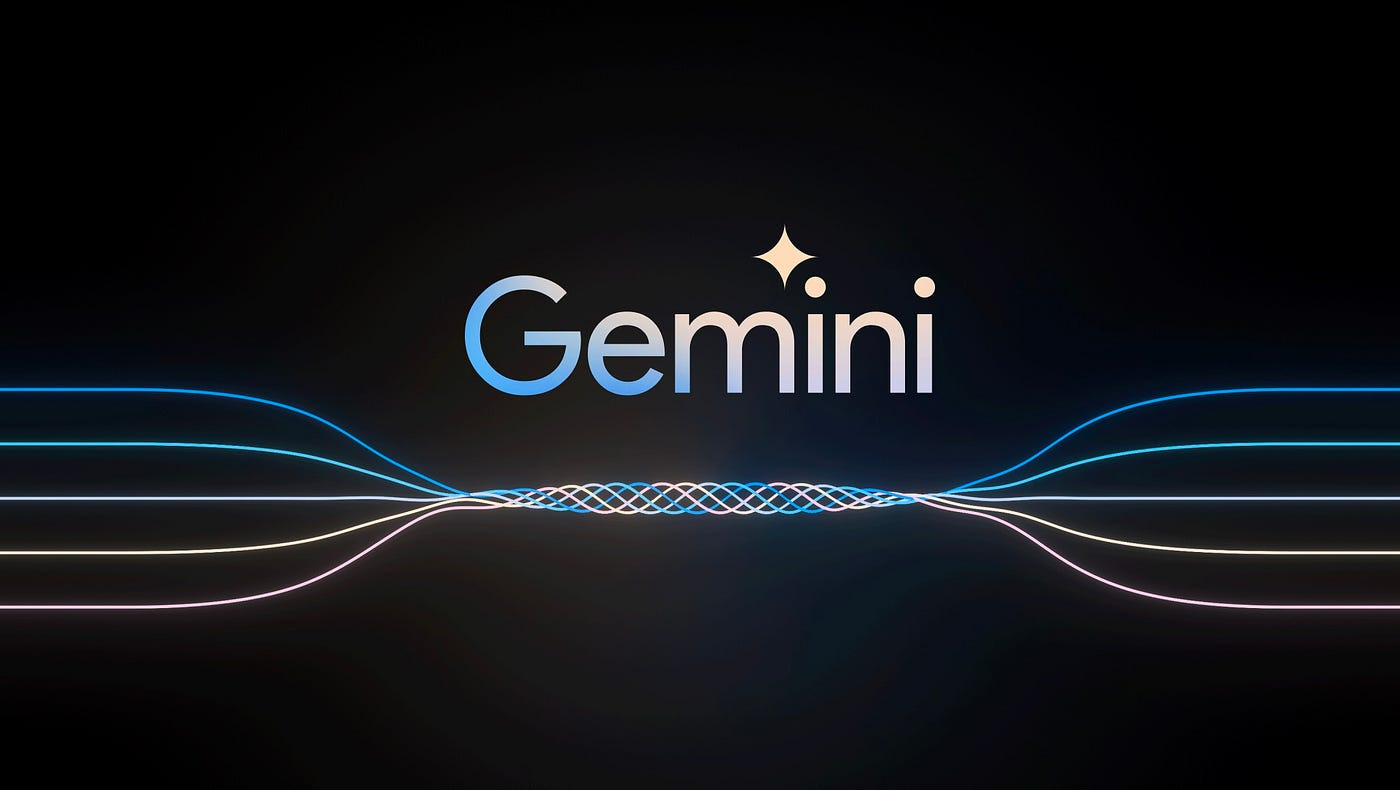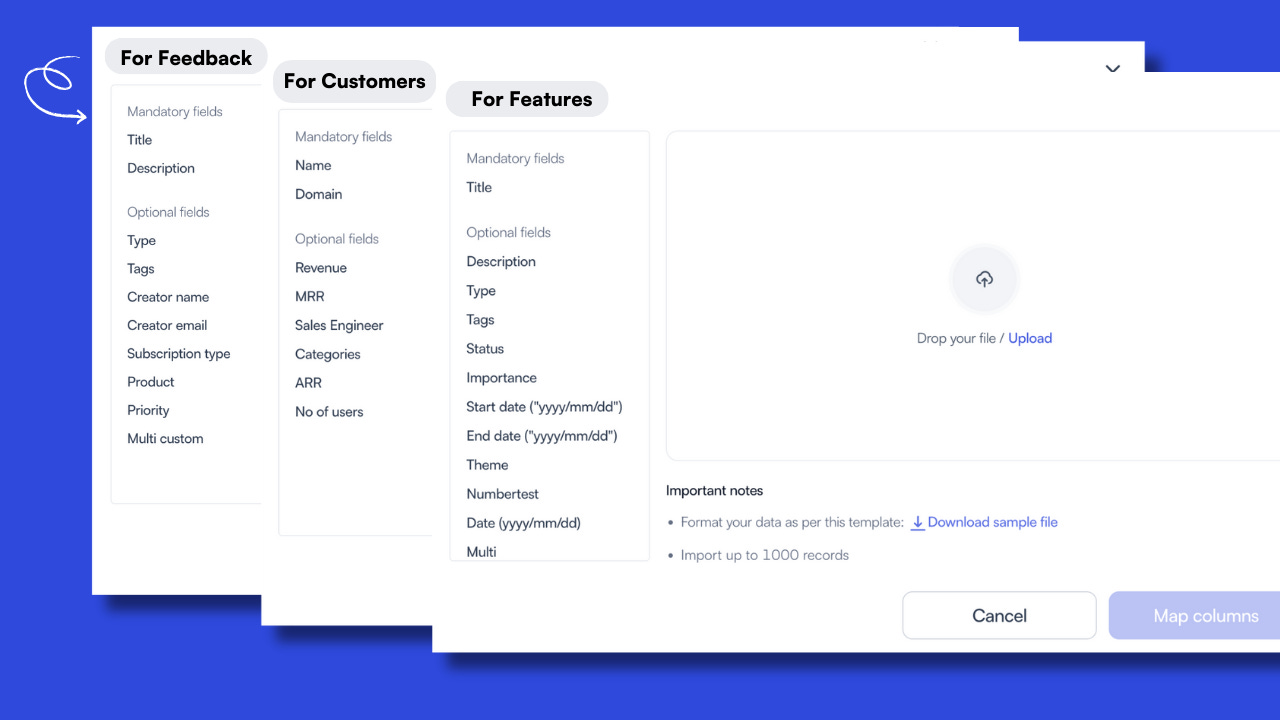Trapped in Product Death Cycle?
Product Management, UX, Startups, and more — freshly curated by Zeda.io
Hello, all you product-loving folks! 💜
Welcome to this week's edition of Product Café, your weekly cup of coffee for everything product management, startups, AI, and more. ☕
Are You Trapped in the Product Death Cycle? Here's How to Break Free!
Have you ever wondered why, despite listening intently to your customers and diligently building the features they ask for, your product still struggles to gain traction? If this scenario sounds familiar, you might be caught in the vicious Product Death Cycle.
Here’s an image that illustrates what Product Death Cycle is:
What is the Product Death Cycle?
In 2014, David J Bland introduced this eye-opening concept in a tweet. The Product Death Cycle emerges when we build features based on customer feedback but still see low usage. The irony? We're doing exactly what we've been taught: listening to our customers. Then, what is going wrong? The key lies in understanding that customers can't always articulate what they truly need.
As David Bland puts it, “Customers don’t always know what they want. You always have to infer it and you have to observe and you have to see qualitatively and quantitatively what’s going on with the product and make investment decisions in where you want to take the product.”
Here are some questions to help you understand if you are utilizing customer feedback effectively.
🤔 Are you building your product or your customers? 🤔
Letting our users inadvertently design our product-It's a trap easy to fall into. While customer feedback is undoubtedly crucial, the task of product design and decision-making should remain in our court. Remember, our users might not be aware of the full potential of our product or the myriad ways it can address their pain points.
Are you approaching the right group?
Imagine this: You're receiving feedback from a core group of users. It's insightful, but it might inadvertently narrow your vision. The issue here is that these users are already accustomed to your product, and their valuable suggestions might not encapsulate the broader market needs or emerging trends. Also, remember their feedback could be prone to biases.
🚧 Are you validating your MVP?
No matter what stage your company is in, it is important that you do MVP testing. Many large companies do anonymous branding to receive unbiased and value-based feedback. This can help you collect reliable feedback before spending too much resources and effort on your product.
📣 Are you communicating values correctly?
Ever been in a situation where your product is packed with value, but the users just don't seem to get it? It can also happen that you have a strong value proposition, and the customer is not able to experience the promised value; maybe it is not communicated well.
Maybe, just maybe, it's not them. It could be the way we're communicating this value. Our marketing strategies, positioning, and pricing all play a pivotal role in how our product is perceived and experienced.
In product development, the type of evidence we rely on to build our products can make or break our strategy. So, it is important to understand the difference between light and strong evidence.
Understanding Light and Strong Evidence
Light evidence is based on customer opinions, and observations are made in controlled or artificial environments (like lab settings). It also includes evidence gathered from low-investment customer interactions. In such situations, you can hardly rely on your customers and build products. Because what they say would be largely different from what they do or interact with your product.
Okay, let us look at some examples to further understand this.
Customer Opinions and Surveys: Gathering feedback from customers through surveys or interviews. While useful, this evidence is considered 'light' because it's based on subjective opinions and may not reflect actual customer behavior.
Low-Investment Interactions: An example of this would be expressing interest via an email signup on a landing page. These actions require minimal effort and commitment from the customer and thus provide only a superficial indication of interest or demand for your product.
Strong evidence, on the other hand, is based on observable facts, real-world interactions, and high-investment customer commitments. It's more reliable because it's grounded in actual behavior and tangible commitments.
High-Investment Customer Interactions: Examples include situations where customers make significant efforts or financial commitments, such as pre-orders, deposits, or providing credit card information for a trial. This level of commitment indicates a higher degree of interest and validation for the product.
It is crucial to rely on strong evidence when making significant product decisions that can alter the course of your product. Strong evidence provides strong reasons for you to trust what your customers are saying about your product.
David Bland explains different strategies to escape the Product Death Cycle:
Avoiding Premature Scaling: Bland warns against scaling a product based on insufficient evidence.
Taxonomy of Experiments: He introduces a taxonomy to guide teams in choosing the right experiments to gather strong evidence for their product concepts.
Importance of Discovery Research: Before developing a product, it's crucial to engage in discovery research to understand the market, customer needs, and the product's feasibility.
You can learn more about his views here👇:
Bonus Tips to Avoid the 'Feature Factory'
Here’s how you can steer clear of becoming a feature-driven rather than a value-driven business:
Develop a strong product vision with SMART objectives.
Research the broader market, not just your current user base.
Ask the right questions to uncover true customer needs.
Focus on the entire funnel: acquisition, onboarding, and retention.
Reevaluate your product positioning and pricing strategy.
Prioritize and test hypotheses to improve key metrics.
Let's Break the Cycle Together!
By understanding and applying these principles, you can develop products that not only meet customer needs but also drive sustainable growth for your business. Keep exploring, testing, and learning – the path to breaking out of the Product Death Cycle is within your grasp! 🚀🌟
Good reads for extra credit 📚
Testing Business Ideas - Innovation Process to Reduce Risks AI Product
The AI Product Manager's Handbook
Was Google’s Gemini AI Demo Faked?
Google recently announced its latest AI model, “ The Gemini”. Since the announcement, it has become a buzzword. According to Google, it is the first model to outperform human experts on MMLU (massive multitask language understanding), which uses a combination of 57 subjects such as math, physics, history, law, medicine, and ethics for testing both world knowledge and problem-solving abilities.
This is not just it, this groundbreaking technology is not just another AI model; it's a multimodal marvel that can juggle and blend various types of information like text, code, audio, images, and even video. Imagine an AI that's smart and incredibly versatile, adapting seamlessly across different platforms, from powerful data centers to the smartphone in your pocket.
Here are the Gemini lineup that Google has introduced:
Gemini Ultra: This is the powerhouse of the trio, built to handle the most intricate and demanding tasks with ease.
Gemini Pro: Think of it as the jack-of-all-trades, expertly scaling across a diverse range of tasks with remarkable efficiency.
Gemini Nano: Compact yet mighty, this model is designed for on-the-go tasks, bringing AI capabilities right to your device.
However, alongside its release, Google released a demo video of Gemini. Initially believed to be real, the video has now been revealed as staged – must say, it is quite a surprising twist!
Google's showcase of Gemini's prowess wasn't entirely as it seemed. The demo initially thought to be a real-time showcase, turned out to be a curated presentation, using specific prompts and still images to depict Gemini's responses, painting a more polished picture than reality. This revelation raises questions about the model's actual capabilities and Google's presentation methods.
Google's Gemini AI demo video showcases Gemini’s ability to identify objects like a rubber duck. While the AI impressively identified the duck as squeaky after being squeezed, this interaction was not as spontaneous as it seemed. The AI was shown a still image of the duck and given text prompts about its characteristics, not real-time visual and auditory cues.
In an article titled “ How it’s Made: Interacting with Gemini through multimodal prompting”, Google explains how the demo video was made.
Even amid all the controversies, we can expect Gemini to amaze us with its capabilities based on the information we have. Let's wait and see if Google can surpass Open AI's capabilities. I'm excited to discover what Gemini has in store. How about you?
What’s brewing on Zeda.io’s side?☕️
Zeda.io has given its CSV import a major sparkle✨! As you must be aware, Zeda.io is a champion in collecting feedback from different sources and generating insights that help you create products that take your revenue meters off the chart!
So, what's new in the CSV import? Imagine you're handling all the ops like feedback management, to contact management on your Excel sheets. Then we strongly recommend you make the shift to Zeda.io. If you're worried about your existing data and its usage, no worries, the new CSV import does that as seamlessly as possible.
Module-specific CSV Import: Now, CSV import works for it all in Zeda.io, be it — a) Importing feedback, b) Importing features, c) Importing companies & contacts. Each module will have a tailored set of import fields.
Mandatory vs. Optional Fields Made Clear - Gain a clear understanding of which fields are a must and which are optional for easy import of data.
Super Easy Column Mapping - Mapping columns to appropriate fields in Zeda.io is now a breeze. You can achieve this with a single click and even create custom fields for your existing CSV columns.
Zeda.io's enhanced CSV import aims to simplify your data migration journey.
Learn more about the update here👇
It’s hard to explain what a Product Manager does, we get it. But you know what’s not that hard- sharing this newsletter with your friends and colleagues!











